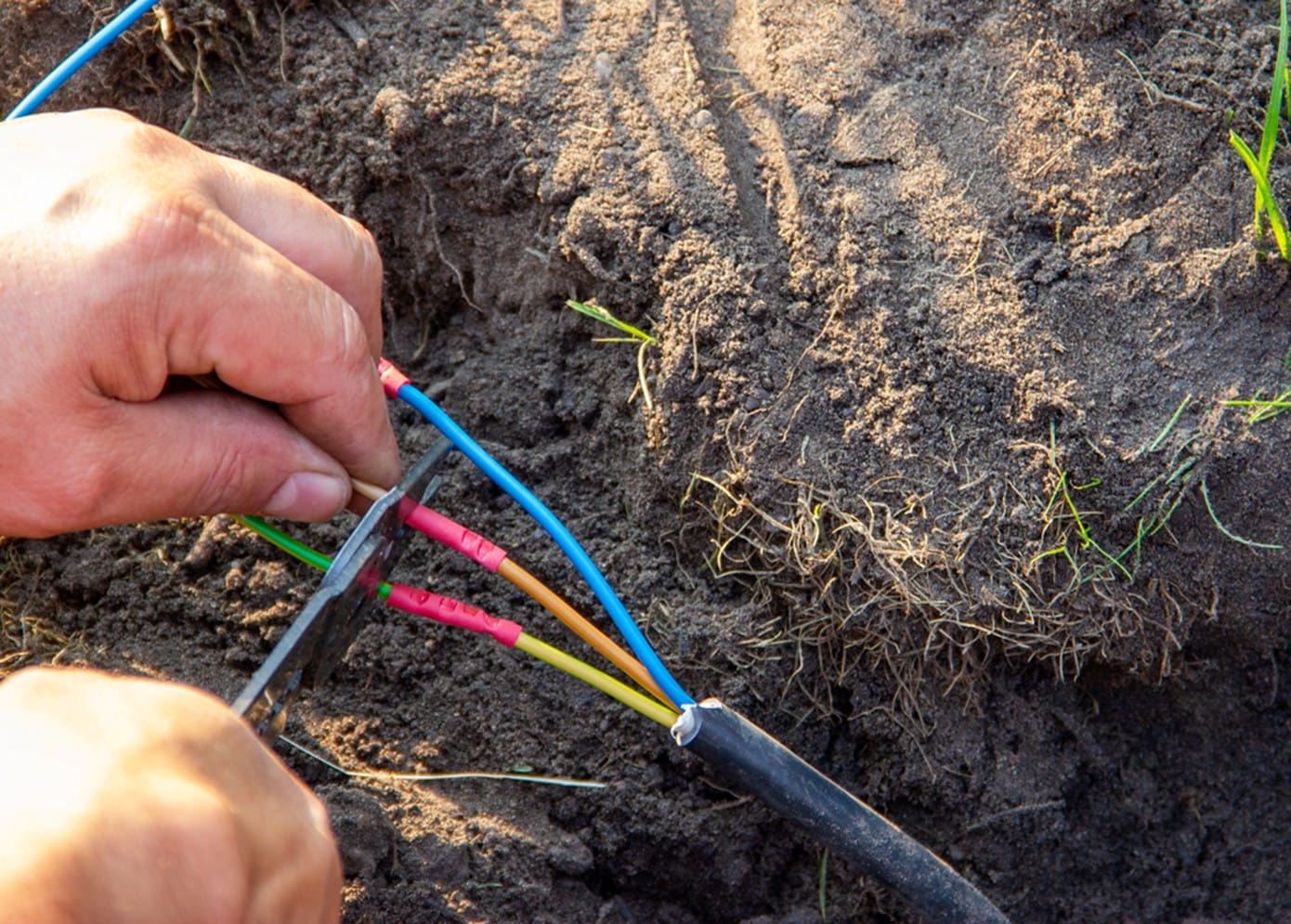
How to Run Electricity to a Shed
Although the main use for many sheds is still to create a little more storage space in the garden, these days, sheds are utilised for an increasing number of different uses. From garden workshops to offices and gyms, there are several different uses for sheds that all require one thing – electricity.
Most sheds can have electricity installed into them, providing it’s done with assistance from a professional and made completely safe. In this guide, we’ll look at how to run electricity to a shed and the steps you need to take to transform your shed, log cabin or summer house.
Why Run Electricity to a Shed?
Adding power to your shed can have a wide number of benefits, but it all depends on what you choose to use your shed for. One of the most obvious benefits is perhaps being able to put lighting in your shed to make it easier to use at night, particularly if you use your shed as a workshop or have converted it to a living space, such as an office or a place to relax.
Having electricity in your shed is also ideal if you want to use heaters, add a refrigerator or any other items that help your shed to fulfil its purpose. Alternatively, you may wish to add an alarm or security system to help keep your shed secure. More and more, people are using their sheds for a variety of uses, and having electricity is the ideal way to make your shed much more than a simple storage space for garden tools.
How to Put Electricity in a Shed
Firstly, and most importantly, it goes without saying that electricity can be extremely dangerous if its not treated with the utmost care. Any electric that is not properly installed or is tampered with without the help of a professional can be potentially deadly. Running electricity to your shed is a lot more complicated than simply running a wire from A to B and switching it on.
The safest way to install electricity into a shed is by using an SWA (Steel Wire Armoured) cable; this cable is used because it’s safe to bury underground and remain free from any rotting or water damage. Choosing the right SWA cable isn’t as simple as just going to a DIY shop and picking one. A professional electrician will be able to help advise you of the best cable to use for your job, as well as install it for you. You can use the Electrical Competent Person website to help find a registered electrician.

How to Run Armoured Cable to a Shed
When you’re ready to start running power to your shed, it’s a relatively simple process. Here are a few steps to help you along your way, do remember that all of this process could be handled by the electrician and, by the simple fact they’re qualified and experienced, we’d recommend doing that. However, there are some aspects that you can help out with or do yourself, which we’ll highlight:
- Find your electrician
First things first, get yourself a registered electrician and show them the scale of the project; that way they can help advise exactly what you’ll need and how the process of running electricity to your shed will work.
- Plan it out
Your electrician will work with you on planning exactly where your cable will run from, the route it will take and where it will access the shed. They’ll also advise the materials you’ll need and take care of that (this could potentially mean a new fuse box in your home or an adaptable junction box on the side of your house).
- Dig the cable trench
This is the step that you can help out with. Once your electrician has planned exactly what route the SWA cable will take to the shed, you can begin digging the trench in which the cable will sit. Make sure you do your digging on a dry day as wet ground will affect the structural integrity of your trench and make it difficult work.
- Let the electrician do their work
Once the trench is dug, it’s time to let the electrician do their work, so sit back and think about the enjoyment you’re going to get from your shed once it has power. Once the work is completed, your electrician should provide you with an Electrical Installation Certificate.
- Plug it in
Once work is complete, simply plug in whatever you’re using in your shed and you’re good to go. From televisions and lighting to fridges and model train sets, whatever you’re planning to use your shed for – you’re good to go!

Can I Run an Extension Lead to My Shed?
Running an extension cable to your shed is a perfectly acceptable short-term solution if you need power in your shed. This should only be done temporarily, however, and cables should be turned off and put away when not in use. As with any electricity use outside, make sure you’re using an appropriate cable that’s made for exterior use and never use an indoor extension cable.
If you find yourself doing this frequently, it may be time to consider a more permanent option and getting in touch with an electrician.
From pent and apex sheds to log cabins, adding electricity to your shed is the perfect way to make your garden building truly multipurpose. Just make sure you’re placing safety at the heart of your planning and don’t cut any corners!